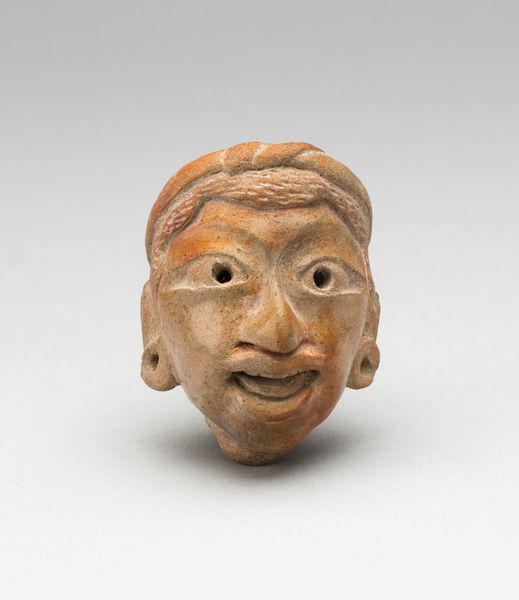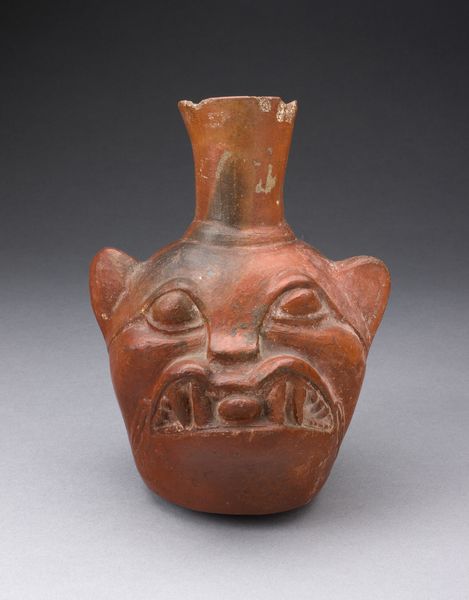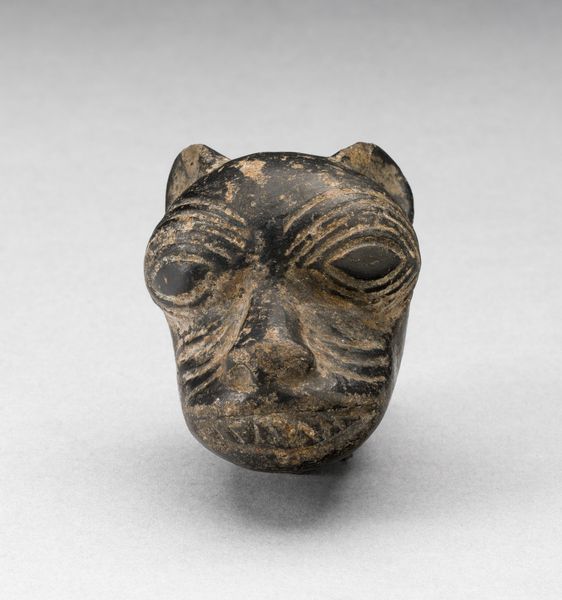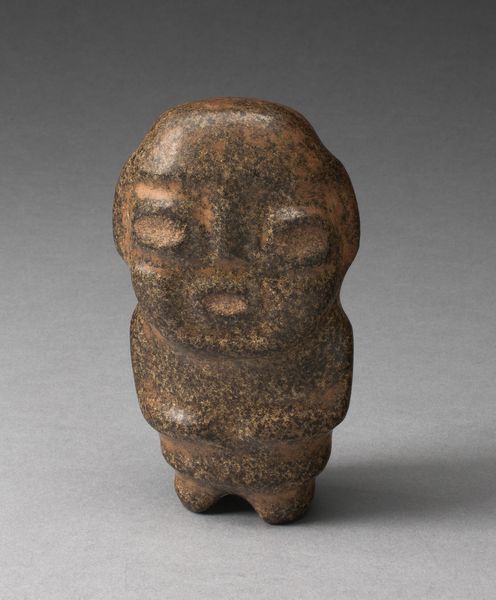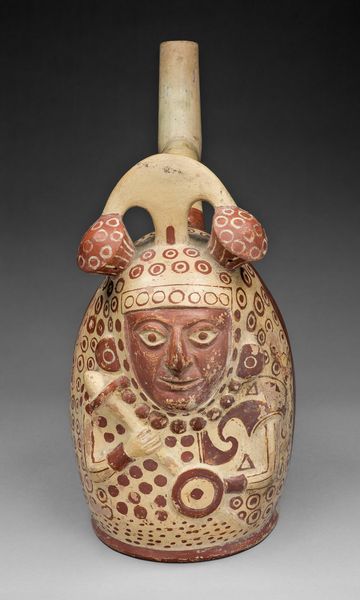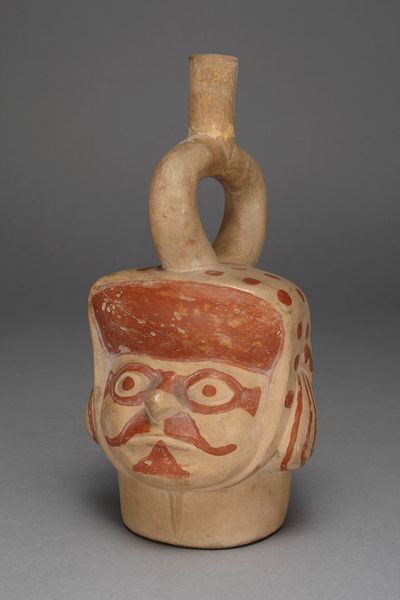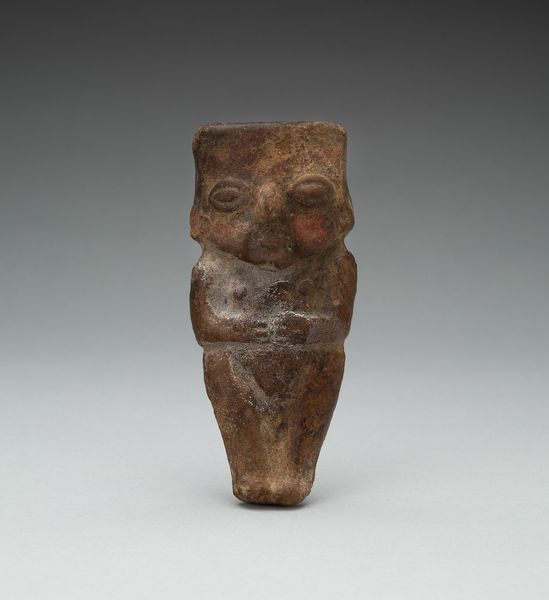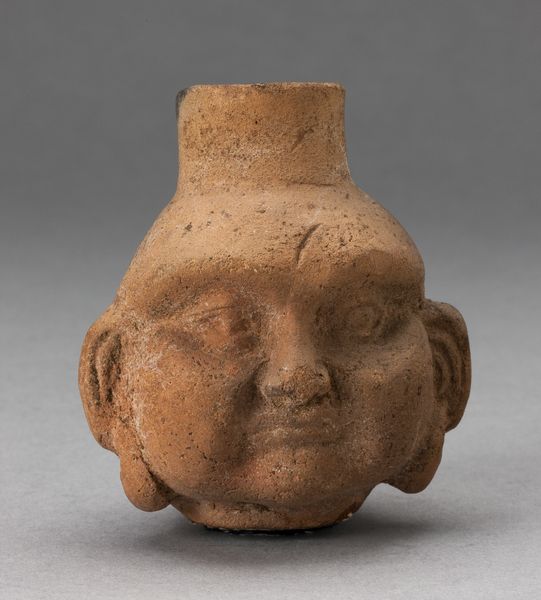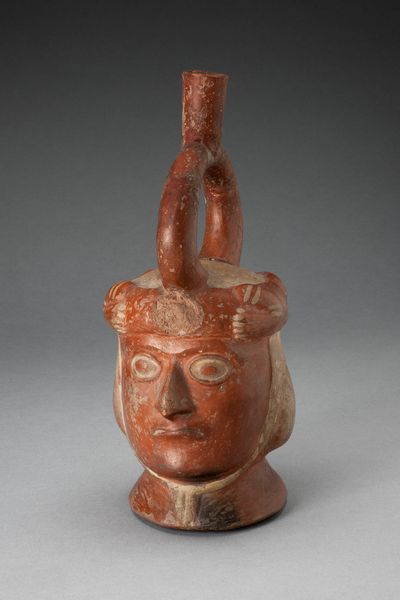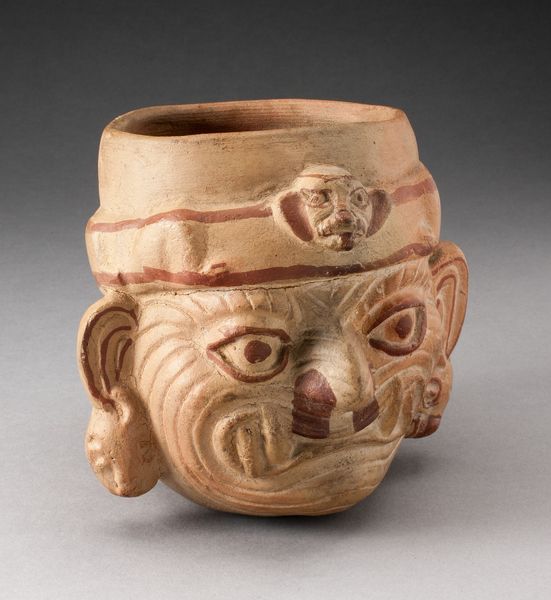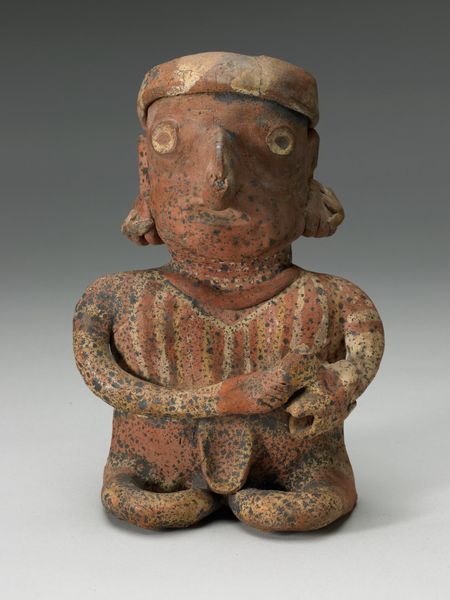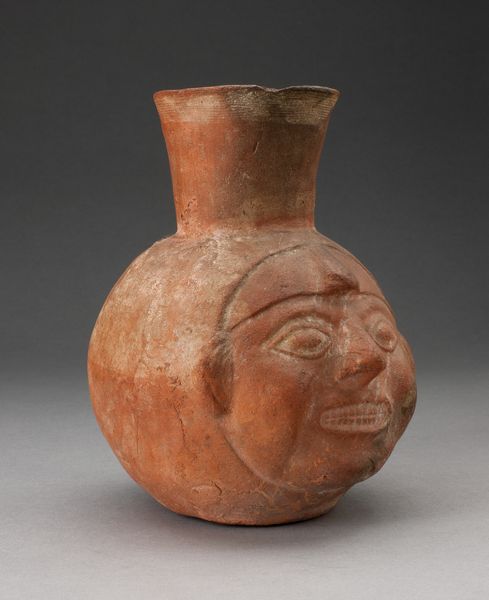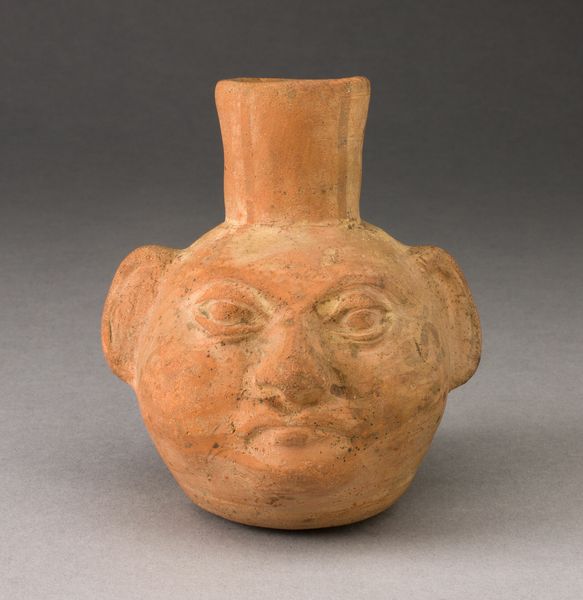
ceramic, sculpture, terracotta
#
sculpture
#
ceramic
#
sculpture
#
terracotta
#
indigenous-americas
Dimensions: H. 10.2 cm (4 in.)
Copyright: Public Domain
Curator: Here we have an extraordinary object: a ceramic Ritual Vessel in the Form of a Head. It dates possibly from 600 to 900 and originates from the Maya civilization. Editor: Immediately, I'm struck by the tactile nature of it. The ceramic material looks incredibly smooth, almost like terracotta, and I imagine it fits perfectly in the palm of your hand. Curator: Indeed. Vessels like this weren't merely decorative. They were potent symbols of ritual practice and demonstrate the Maya's complex understanding of cosmology and social hierarchy. This object’s role in Mayan society sheds light on the sociopolitical structures present at the time. Editor: When you think about it, shaping clay requires specialized knowledge and access to materials. Someone had to extract the clay, prepare it, skillfully mold it, and then fire it just right. How did those processes contribute to the power imbued in such objects? It makes you think about the specific labour, skill, and time invested. Curator: Absolutely. The head form itself signifies an ancestor or deity, emphasizing the cyclical nature of life and the importance of lineage within Mayan society. Consider where the vessel was placed, perhaps during ceremonies meant to legitimize power or ensure prosperity for a ruler's line. Editor: I'm also captivated by the adornment. On one side, we see an elaborate curvilinear design, while the other has this sort of beaded texture. Was the surface intentionally textured to be physically felt as part of the ritual? And I wonder what dyes and techniques were employed, considering the naturalistic material. Curator: The asymmetry could represent different aspects of the individual depicted, possibly showing the duality of the human condition. It may reference specific iconography tied to Maya religious beliefs and the natural forces they tried to manage. Editor: It truly speaks to the artistry and engineering interwoven in everyday Mayan society. Each mark carries purpose and material expression that’s as profound as the beliefs and narratives to be signified. Curator: Precisely. By studying such objects, we can explore the narratives that resonate from both form and usage throughout history. Editor: Agreed; understanding the process allows us to better value its impact.
Comments
No comments
Be the first to comment and join the conversation on the ultimate creative platform.
